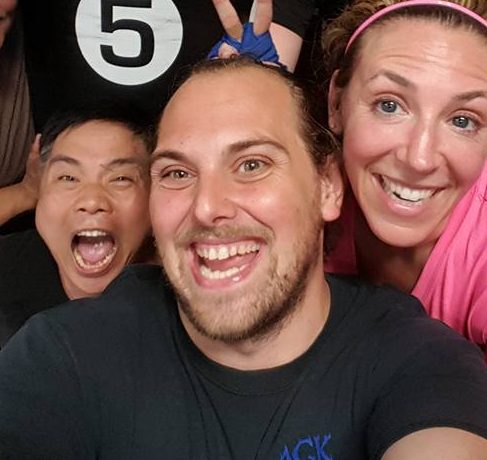At Vision Martial Arts, located on Medford Ave in Patchogue, we emphasize the importance of both classical and contemporary kung fu forms in our curriculum. Forms, or sequences of choreographed movements, may seem outdated to some in the modern era of martial arts training, but we believe they serve as a crucial tool for building the mental and physical foundation necessary for practical application. Forms allow students to develop a deep connection with their body, enhance their understanding of martial concepts, and honor the historical and cultural roots of kung fu.
However, it’s essential to understand that this is our interpretation of forms training. Other schools and even instructors within the same system may hold different views, and that’s perfectly valid. In martial arts, there is no singular path—only the one that fits your journey.
Forms as Movement-Based Textbooks
Historically, forms acted as movement-based textbooks. In a time when literacy was limited and access to visual learning tools like YouTube didn’t exist, these pre-arranged patterns of movement were the primary way for masters to pass down their knowledge. Each movement in a form carries layers of wisdom, encapsulating not only physical techniques but also philosophies and strategies that have been cultivated over centuries. This method of teaching allowed martial artists to practice and preserve the art, ensuring its survival and evolution through the generations.

This is a move taught in one of the first forms that beginner students learn at Vision Martial Arts. When they learn the “Rolling Pull Throw” as intermediate students, they find they already know how to do the takedown!
For today’s students, this historical relevance remains powerful. Practicing forms is not just about learning to defend yourself; it’s about connecting with the cultural heritage of kung fu and understanding how martial artists from the past developed their techniques without modern conveniences.
In general, Chinese kung fu forms can be filtered into three categories: Those that build the body, those that convey theoretical knowledge, and those that drill fighting techniques. Let’s explore.
Forms as Tools for Physical Development
One of the primary reasons we incorporate forms into our training is for physical development. Some forms focus purely on building the body, improving attributes such as strength, flexibility, and balance. While these forms may not directly translate into practical self-defense, they are essential for preparing the body for the rigors of more advanced techniques. Just as a house requires a strong foundation before it can be built, martial artists need to develop the body’s physical capabilities before mastering more complex movements.
In particular, forms that focus on stances, dynamic turns, and transitions help students cultivate the body awareness necessary for controlling their movements in real-world scenarios. This increased proprioceptionthe awareness of how one’s body moves through space—becomes invaluable when students move on to sparring or self-defense, where precise control over the body is crucial.
Theoretical Training for Strategic Understanding
Forms are not solely about physical conditioning; they also teach us about the theoretical principles behind martial arts. In kung fu, these theories guide how we move, react, and strategize during combat. Through forms, students begin to grasp abstract concepts like positioning, leverage, and the efficient use of energy.
For example, certain forms demonstrate how to handle multiple opponents at once or how to maximize the power of a strike by engaging the entire body rather than just the arms. These theoretical insights aren’t necessarily about specific techniques but rather about teaching students how to think strategically in a fight. As students progress, these broad concepts become ingrained, helping them react instinctively in unpredictable situations.
Forms for Practical Application
While some forms focus on physical development and theory, others teach fighting concepts with a direct application to combat. These forms include techniques and combinations that can be translated into real-world scenarios, such as self-defense or sparring. At Vision Martial Arts, we introduce our students to forms that they may not fully understand at first but revisit at later stages of their training. For instance, one of the first forms we teach to beginners introduces movements that are later applied in more advanced techniques, like the “Rolling Pull Throw.” Watching students have those “aha!” moments when they realize they already know a move from a new perspective is one of the most rewarding parts of teaching.
This is a move taught in one of the first forms that beginner students learn at Vision Martial Arts. When they learn the “Rolling Pull Throw” as intermediate students, they find they already know how to do the takedown!
It’s important to emphasize, though, that we don’t believe forms alone will make someone a better fighter. Forms lay the groundwork for practical training but must be paired with partnered drills, sparring, and freestyle experimentation to become truly effective in combat. Forms help build muscle memory, which allows students to execute techniques instinctively when under pressure, but the real learning comes when those movements are tested and adapted in live scenarios.
Building Cultural & Historical Understanding
Forms are not just a physical or mental exercise—they also serve as a window into the cultural and historical origins of martial arts. Every form contains elements that reflect the philosophies, values, and history of the masters who created them. By practicing these forms, students gain a deeper appreciation for the traditions that shaped kung fu and can better understand how those traditions influence their own approach to martial arts.
At Vision Martial Arts, we believe that connecting with the historical roots of kung fu is essential to shaping a personal theory of self-defense. When students understand the context in which these forms were developed, they can more effectively integrate the wisdom of the past with modern applications. This cultural connection enriches the learning experience, adding another layer of depth to each student’s martial arts journey.
Forms as a Step, Not the Destination
Forms serve as an integral part of training at Vision Martial Arts in Patchogue. They provide students with the physical, mental, and cultural foundation needed to succeed in more practical aspects of martial arts, such as sparring and self-defense. However, it’s important to recognize that forms are not the end goal—they are a stepping stone toward deeper understanding and application.
At our school, we pair forms with hands-on practice and encourage students to test and refine what they’ve learned in live settings. This approach ensures that forms training remains relevant and useful in real-world scenarios.
Finally, we respect that our theories about forms training may differ from other schools or even other instructors within the same system. Martial arts is a deeply personal practice, and every student, teacher, and school brings their own perspective. What’s most important is finding an approach that resonates with you and your martial arts journey.
To start your martial arts journey, click the button below to schedule their first class in one of our trial programs:
Vision Martial Arts
218 Medford Ave
Patchogue, NY 11772
631-707-5610

Author: Michael A Evans
Michael’s journey in martial arts began in 1985, and he now proudly holds a 6th-degree black sash, mentored by Moises Arocho. As the co-founder of Vision Martial Arts in Patchogue, NY, he not only offers robust martial arts training for adults but is also deeply committed to childhood development. Through martial arts and various movement techniques, he empowers kids and adults to realize their potential and shine. Beyond the martial world, Michael wears the hat of a founder of Forgotten Skillz, and collaborates on the enchanting “Little Laurie Science Stories” book series and the Ninja Née Science Education Program. Educated at the NY College of Health Professions, he brings therapeutic relief to many as the lead massage therapist at Massage LI.

















